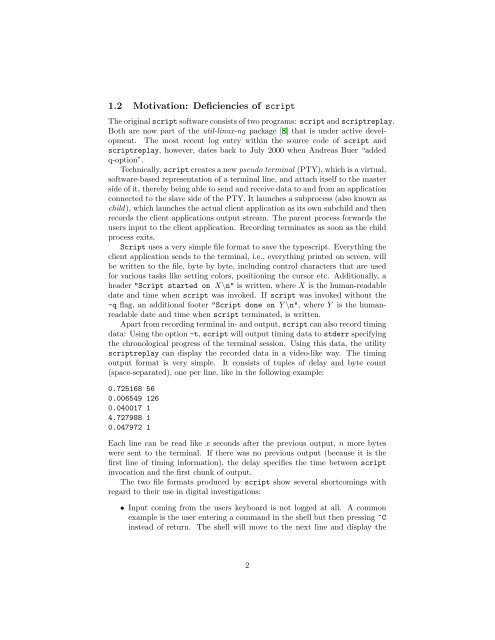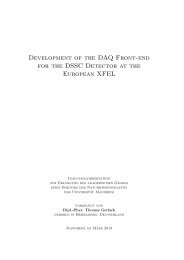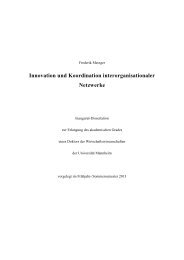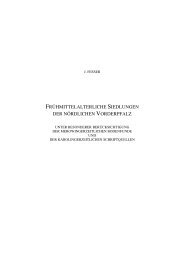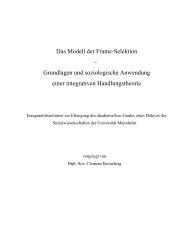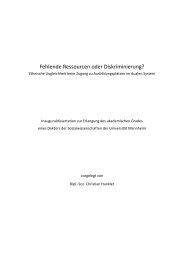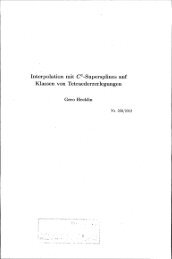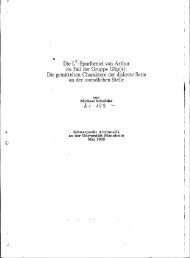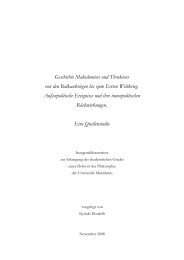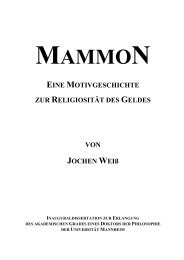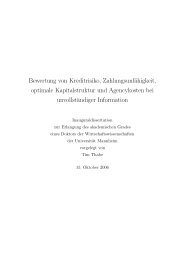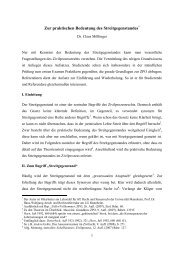Design and Implementation of a Documentation Tool for ... - MADOC
Design and Implementation of a Documentation Tool for ... - MADOC
Design and Implementation of a Documentation Tool for ... - MADOC
Create successful ePaper yourself
Turn your PDF publications into a flip-book with our unique Google optimized e-Paper software.
1.2 Motivation: Deficiencies <strong>of</strong> script<br />
The original script s<strong>of</strong>tware consists <strong>of</strong> two programs: script <strong>and</strong> scriptreplay.<br />
Both are now part <strong>of</strong> the util-linux-ng package [8] that is under active development.<br />
The most recent log entry within the source code <strong>of</strong> script <strong>and</strong><br />
scriptreplay, however, dates back to July 2000 when Andreas Buer “added<br />
q-option”.<br />
Technically, script creates a new pseudo terminal (PTY), which is a virtual,<br />
s<strong>of</strong>tware-based representation <strong>of</strong> a terminal line, <strong>and</strong> attach itself to the master<br />
side <strong>of</strong> it, thereby being able to send <strong>and</strong> receive data to <strong>and</strong> from an application<br />
connected to the slave side <strong>of</strong> the PTY. It launches a subprocess (also known as<br />
child), which launches the actual client application as its own subchild <strong>and</strong> then<br />
records the client applications output stream. The parent process <strong>for</strong>wards the<br />
users input to the client application. Recording terminates as soon as the child<br />
process exits.<br />
Script uses a very simple file <strong>for</strong>mat to save the typescript. Everything the<br />
client application sends to the terminal, i.e., everything printed on screen, will<br />
be written to the file, byte by byte, including control characters that are used<br />
<strong>for</strong> various tasks like setting colors, positioning the cursor etc. Additionally, a<br />
header "Script started on X\n" is written, where X is the human-readable<br />
date <strong>and</strong> time when script was invoked. If script was invoked without the<br />
-q flag, an additional footer "Script done on Y \n", where Y is the humanreadable<br />
date <strong>and</strong> time when script terminated, is written.<br />
Apart from recording terminal in- <strong>and</strong> output, script can also record timing<br />
data: Using the option -t, script will output timing data to stderr specifying<br />
the chronological progress <strong>of</strong> the terminal session. Using this data, the utility<br />
scriptreplay can display the recorded data in a video-like way. The timing<br />
output <strong>for</strong>mat is very simple. It consists <strong>of</strong> tuples <strong>of</strong> delay <strong>and</strong> byte count<br />
(space-separated), one per line, like in the following example:<br />
0.725168 56<br />
0.006549 126<br />
0.040017 1<br />
4.727988 1<br />
0.047972 1<br />
Each line can be read like x seconds after the previous output, n more bytes<br />
were sent to the terminal. If there was no previous output (because it is the<br />
first line <strong>of</strong> timing in<strong>for</strong>mation), the delay specifies the time between script<br />
invocation <strong>and</strong> the first chunk <strong>of</strong> output.<br />
The two file <strong>for</strong>mats produced by script show several shortcomings with<br />
regard to their use in digital investigations:<br />
• Input coming from the users keyboard is not logged at all. A common<br />
example is the user entering a comm<strong>and</strong> in the shell but then pressing ^C<br />
instead <strong>of</strong> return. The shell will move to the next line <strong>and</strong> display the<br />
2


